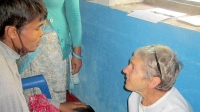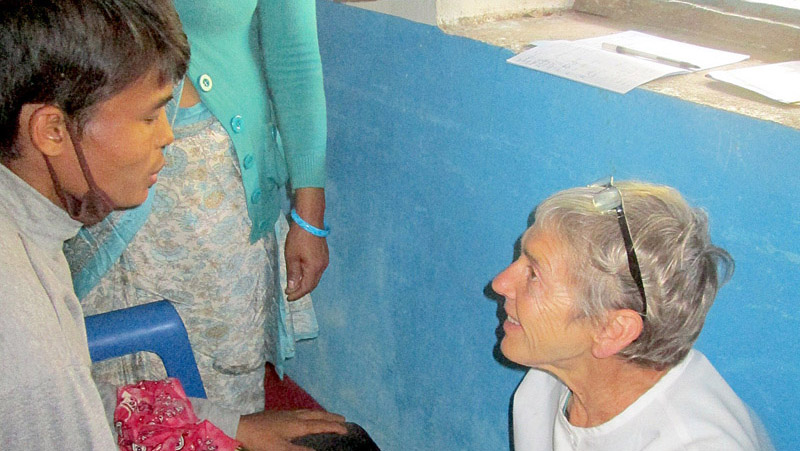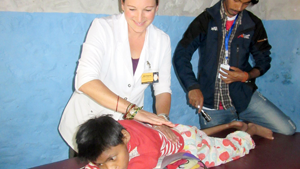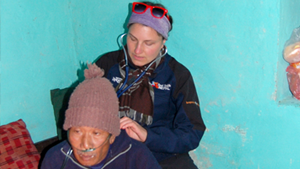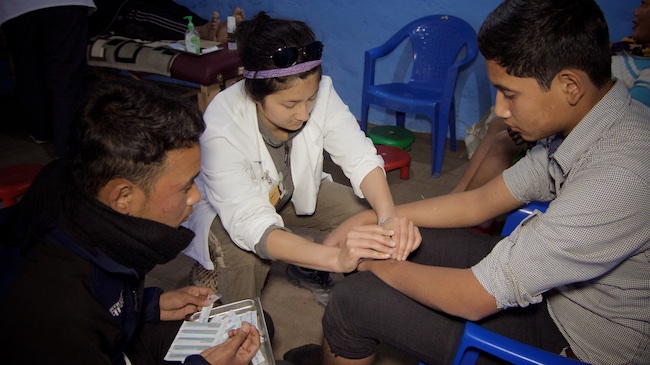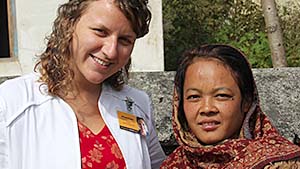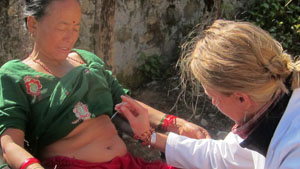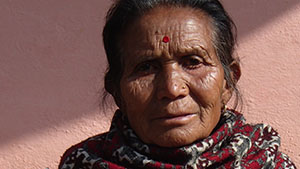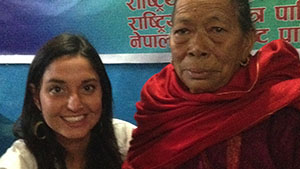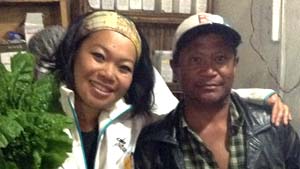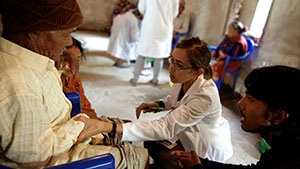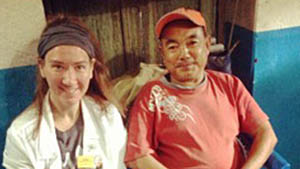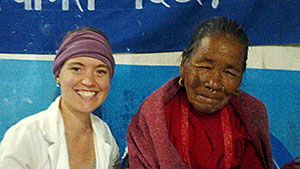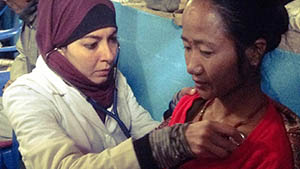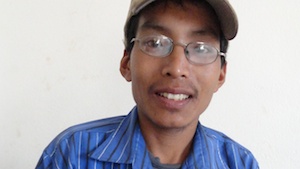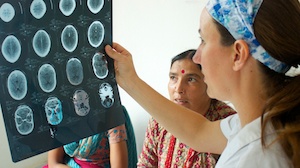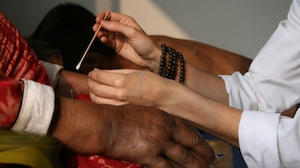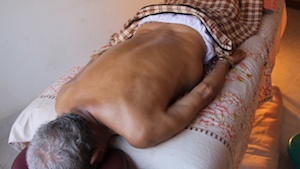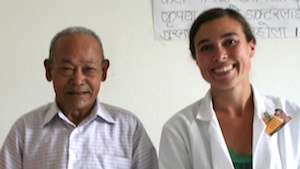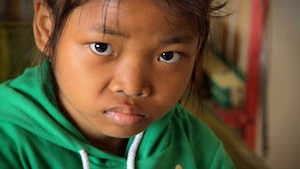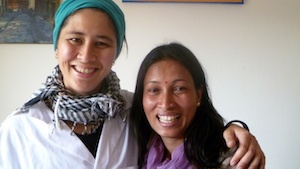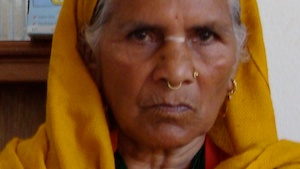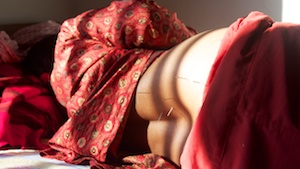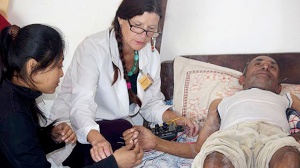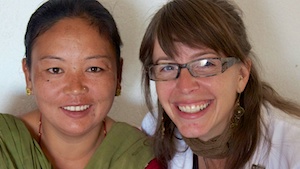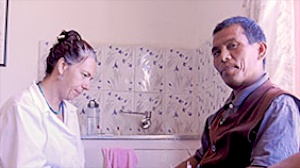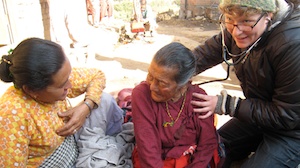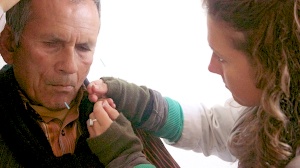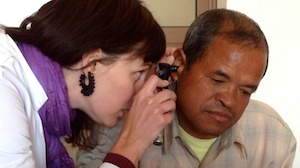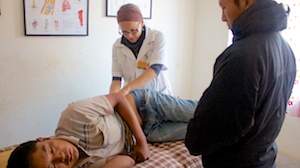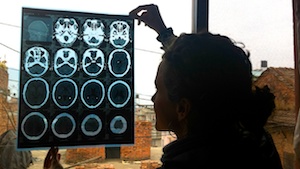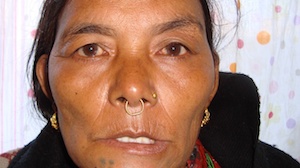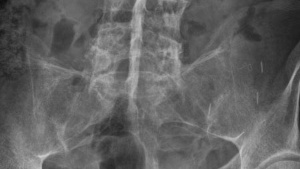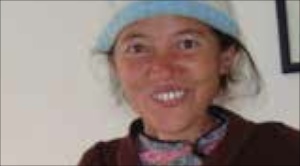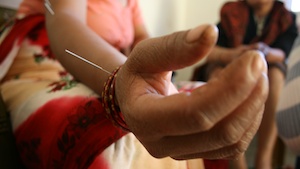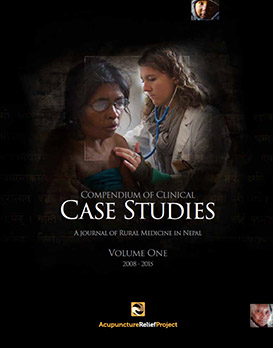Seven Crow MAcOM LAc
February 2012
OVERVIEW
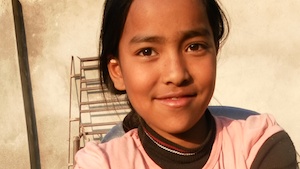 11-year-old female presents with large lump over left radial artery at radial styloid process, causing pain to the local area. She had minor surgery to remove a gelatinous substance from within the cyst and was informed by the doctor that it will keep growing back. After 9 acupuncture treatments, including internal and external herbal medicines, the cysts presented with 70% reduction in size.
11-year-old female presents with large lump over left radial artery at radial styloid process, causing pain to the local area. She had minor surgery to remove a gelatinous substance from within the cyst and was informed by the doctor that it will keep growing back. After 9 acupuncture treatments, including internal and external herbal medicines, the cysts presented with 70% reduction in size.
SUBJECTIVE
Patient presents with large lump over radial side of left wrist. She reports (with the help of her mother) that it started to grow a year and a half ago and refers to it as a “bone growth.” She saw a doctor to inquire about removing the lump and was informed that it was not possible due to the innervation of the cyst.
There is no change to the pain or growth with temperature. Some stimulation via massage has been helpful to reduce pain and swelling. Patient states she visited a doctor to have it surgically removed and was prepped for the procedure when the doctor opted not to do a complete removal due to innervation of the cyst by the radial artery. The doctor did remove a gelatinous substance from the top layer of the cyst, but the mass grew back. The size of the cyst at first visit to this clinic on January 17, 2012 has been the same for 1 year.
At age 2, she contracted pneumonia. Since then, she catches colds easily, 3-4 times per year, each lasting up to 2 weeks. These present with a runny nose with clear mucus, cough with some phlegm, body aches, headaches, loss of appetite and slightly looser stools with frequent urination. Since beginning treatment, she has had no common colds.
OBJECTIVE
 Patient has a thin body, but appears energetic, smiling, talkative and open to conversation with full eye contact. She knows some English and answers the questions directly when she is able. Upon palpation, the skin is warm, tougher than the surrounding skin, and exhibits a hard central mass that is moveable. The cyst sits half an inch off the skin and about half an inch wide, on the crease of the left wrist, with localized sharp pain when palpated deeply, which she expresses through guarded behavior. There is also some additional swelling and redness at the height of the mass, but no lack of range-of-movement in the joint.
Patient has a thin body, but appears energetic, smiling, talkative and open to conversation with full eye contact. She knows some English and answers the questions directly when she is able. Upon palpation, the skin is warm, tougher than the surrounding skin, and exhibits a hard central mass that is moveable. The cyst sits half an inch off the skin and about half an inch wide, on the crease of the left wrist, with localized sharp pain when palpated deeply, which she expresses through guarded behavior. There is also some additional swelling and redness at the height of the mass, but no lack of range-of-movement in the joint.
Tongue: Pink body with a red tip, white tongue coat, thicker at root
Pulse: Thin, slippery overall with deficiency in the right cun position, and deep in both chi positions
Patient records include:
X-ray of left wrist, July 20, 2010 (1 ½ years prior to current treatments): No abnormal bone growth is shown
Ultrasound of left wrist, July 4, 2010 (1 ½ years prior to current treatment): Reveals cysts growing on either side of radial artery, with possible nerve innervation
Approximately 1.7 x 0.9 cm of cystic legion is noted in the volarradial aspect of the wrist, with a smaller cyst measuring 0.6 x 0.3 cm rooted deeper. The left radial artery is intimately related to area of the posterior wall of the superficial cyst. It shows normal color and doppler flow in the radial artery.
Hospital visit, February 20, 2011 – check-up (1 year prior to current treatment): Swelling in left wrist for past 10 months, gradually increasing in size. Positive for pain, but no trauma indicated. At time of check-up, 4 x 3 cm2 in the wrist at the ventral surface and lateral margin
ASSESSMENT
DX: 2 ganglion cysts growing around the left radial artery, with some innervation by the surrounding nerves of the local area
TCM DX: Mass due to phlegm accumulation in the channels and collaterals of the Lung with some qi and blood stagnation present as indicated by the fluid filled node over TaiYuan (LU9) and slight compression of the artery. Condition is due to constitutional wei qi and Lung qi vacuity, with Spleen qi vacuity, allowing for retained pathogens to harbor within.
PROGNOSIS: Due to placement of the cyst, it may not be possible to completely resolve the node. It is likely that herbal treatments, acupuncture and self-massage will reduce the size of the cyst, but it may not resolve completely.
PLAN
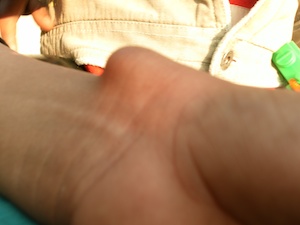 Patient to be treated at the satellite clinic 2 times per week for 10 weeks and reassess progress after a second ultrasound. The focus will be on constitutional points, surrounding the area with needles, herbal treatments internally and externally, along with self-massage and qi gong. Aim is to reduce pain and size of the cyst to avoid surgery.
Patient to be treated at the satellite clinic 2 times per week for 10 weeks and reassess progress after a second ultrasound. The focus will be on constitutional points, surrounding the area with needles, herbal treatments internally and externally, along with self-massage and qi gong. Aim is to reduce pain and size of the cyst to avoid surgery.
TYPICAL TREATMENT
Acupuncture: Surround the dragon technique with 5-7 needles includes LU7 (Lie Que), LU9 (Tau Yuan) and LI5 (Yang Xi) all threaded towards the center of the cyst; ST36 (Zu San Li), SP6 (San Yin Jiao), SP9 (Yin Ling Quan) and KD3 (Tai Xi) to boost constitutional deficiencies.
Moxa: Indirect pole moxa for short duration to reduce pain and swelling in the area. In the future, try small rice grain moxa directly on the swelling.
Massage: Light yin tuina massage mixed with qi gong to the area to increase qi and blood flow.
Herbal Medicine: San Zhong Kui Jian Tang (Hai Zao, Kun Bu, Jie Geng, San Leng, E Zhu, Bai Shao, Gang Gui Wei, Hunag Qin, Huang Lian, Long Dan, Lian Qiao, Zhi Mu, Huang Bo, Tian Huan Fen, Chai Hu, Shang Ma, Ge Gen, Gan Cao) drains pus, reduces swelling, abcesses and hard nodes; 1 capsule TID internally and 1 capsule mixed with oil to make paste to apply externally over area morning and night. Once the cyst has shrunk by 80%, Yu Ping Feng San (Huang Qi, Bai Zhu, Fang Feng) will replace San Zhong Kui Jian Tang internally for the constitutional deficiencies.
Lancet: At the 3rd treatment, the cyst was punctured with a lancet. A small amount of gelatinous fluid and blood was extracted.
OUTCOME
After 9 treatments, the cyst reduced in height and redness by 70% from initial inspection. The swelling spread in width, but reduced in height. There was no longer a hard mass underneath and no redness to area. Palpation revealed little to no pain, and no guarding to area.
CONCLUSION
Continue care for 4-6 more treatments. Follow up with ultrasound for further assessment. Prognosis is good, revealing no current need for surgery. However, it is unlikely the node will stay dormant without continued care, and attention to underlying constitutional deficiencies.


